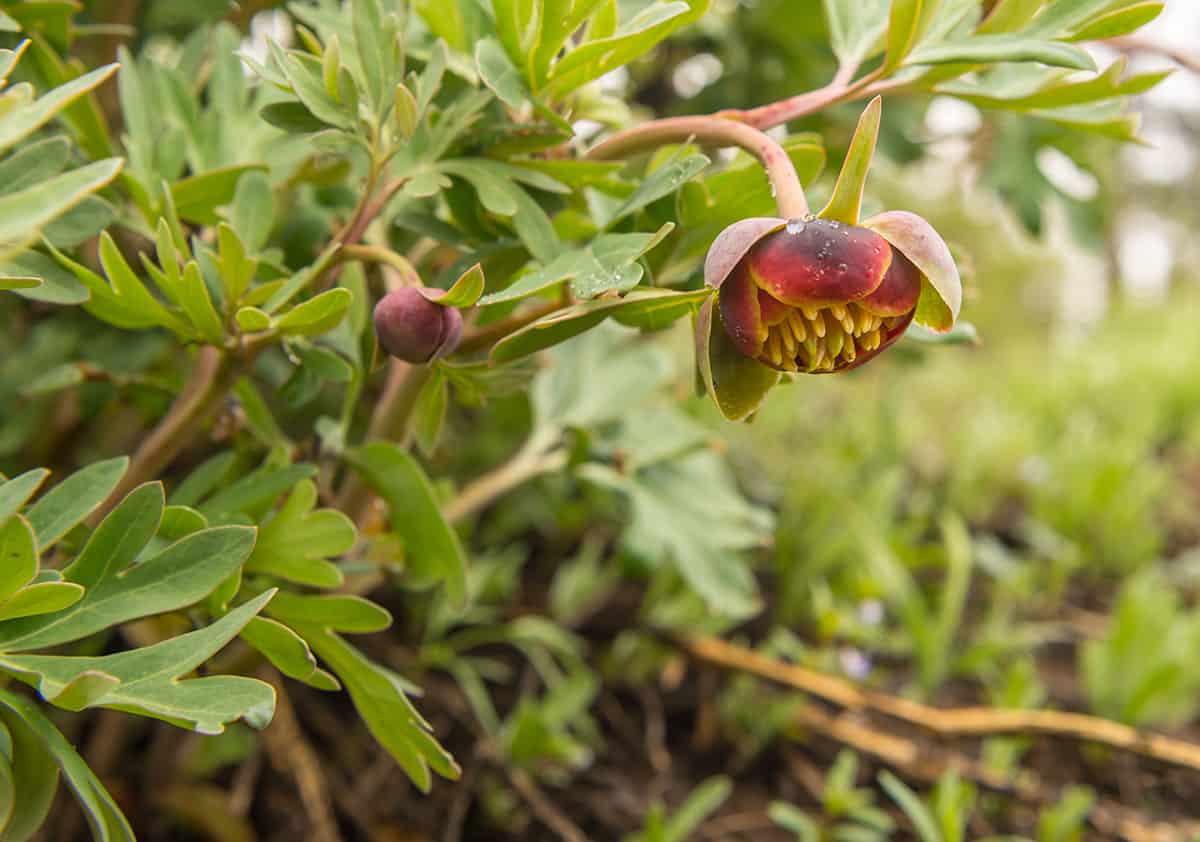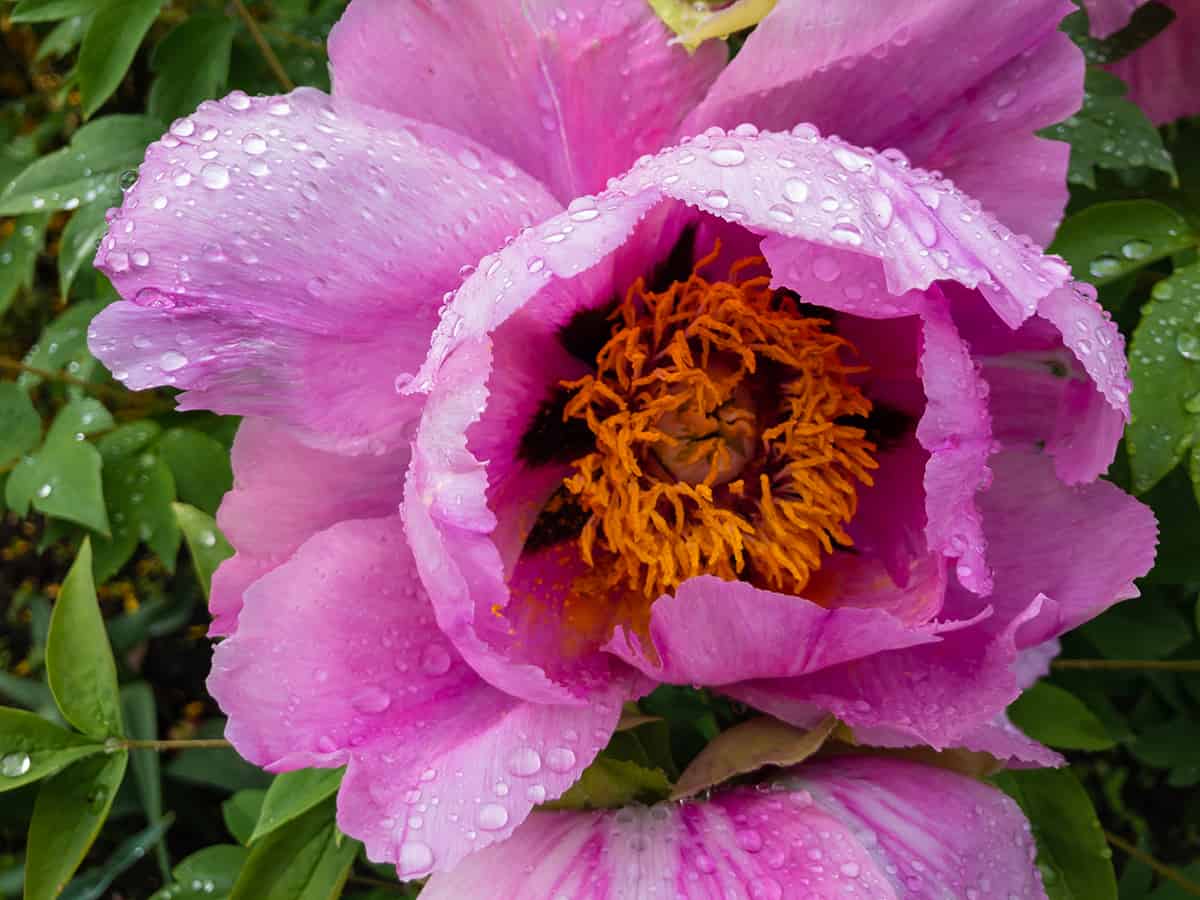The history of the peony can be traced back to 1000 BC when the plant was reportedly growing in China. The peony also has its roots firmly placed in regions of North America and Europe.
Here we investigate where peonies are native, and which types of peonies hail from particular areas.
Table of Contents
Native Peony Regions

There are over 30 different species of peony, which belong to the genus Paeonia. Paeonia is the only genus in the family Paeoniaceae. Of these multiple species, there are actually very few which we commonly grow in our gardens.
In fact, most species of peony that are sold as landscape plants or cut flowers are the result of hybridizations, where two or more types of peony have been crossed with each other. Popular types of peonies include the tree peony, which is the name applied to a number of peonies belonging to the Moutan group of peonies. Other popular peony types include the Chinese peony (Paeonia lactifolia) and the common peony (Paeonia officinalis).
Peonies Native to North America
Brown’s peony (Paeonia brownii)

This species of peony is native to the northwestern United States, where it grows at high altitudes. It is fairly low growing, reaching ultimate heights of around 12 to 18 inches. The flowers of this plant appear in late spring, typically late in April or early in May. The blooms are not showy, with the delicate or pretty look that you would associate with peonies, however, they are quite interesting.
The flowers have thick, leather-like petals that have a fleshy look. They are burgundy in color but edged with yellow-green. Their petals partially open out to reveal the inner yellow-green stamens. Unlike peonies you would find in gardens, the Brown’s peony produces flowers that droop heavily on the dramatically arching stems, seemingly struggling under the weight of the flowers.
These plants grow natively in semi-shaded areas, where climate conditions create a short growing season, with long, cold winters. They will struggle in wet soils and need well-draining soil to help protect their fleshy roots from rotting. You will find the Brown’s peony growing natively in California, Washington, Oregon, Nevada, Montana, Idaho, Wyoming, and Utah.
California peony (Paeonia californica)

This peony grows in abundance in California, in coastal mountainous regions, or in scrublands. It produces flowers that have a similar appearance to Brown’s peony, but they are a more vivid shade of red. What is interesting about the California peony is that it blooms in winter, and enters its period of rest in summer.
The entire plant will die back to the ground in June or July, then re-emerge in winter, ready to flower at any time from January to March. It prefers partially shaded conditions and therefore does well as an understorey plant beneath larger shrubs and trees. It is especially sensitive to wet conditions, particularly during summer when it enters its dormant stage. Heavy summer rain will cause the fleshy roots of this plant to rot.
Peonies Native to Asia
Delavay Peony (Paeonia delavayi)

This is a type of tree peony that is endemic to China. Despite being known as a tree, the Delavay peony actually takes the form of a medium-sized shrub.
It produces flowers in late spring to early summer, which are small in size, with a nodding habit. The flowers will vary in color from yellow-green through to red-brown.
Chinese Peony (Paeonia lactiflora)

This is a popular species of peony that is native to eastern and central Asia. It has been grown ornamentally since the 7th century in China and was introduced to Europe in the 18th century. This species is the parent plant of most modern varieties of peony. Chinese peonies are known for their ability to produce elaborate, decorative flowers in a wide range of colors.
They will flower in late spring to early summer, typically lasting for only 7 to 10 days. These peonies will grow to average heights of 2 to 3 feet, with a spread to match. They thrive in full sun or partial shade and need to be grown in well-draining soil.
Veitch’s Peony (Paeonia veitchii)

This peony is native to China, where it grows to around 3 feet in height. It produces single flowers in bright pink through to red, with a large central disk made up of densely packed yellow stamens. One interesting fact about this peony is that its foliage is finely segmented, which is unusual for non-woody species of peony.
Peonies Native to Europe
Wild Peony (Paeonia mascula)
This peony is native to a broad region of Europe, including Italy, Greece, Turkey, Spain, Montenegro, Serbia, Bulgaria, France, Syria, and Croatia, and into the Middle East in Israel and Iraq.
It will flower for one week in May or June, with dark pink or red blooms. The flowers then develop into seed pods which are also known as jester’s hats because of their unusual star-like shape.
Fernleaf Peony (Paeonia tenuifolia)

This peony grows natively in Eastern Europe, including Ukraine, Bulgaria, Serbia, and Russia. It flowers in late spring and early summer with a profusion of striking red single flowers, which feature contrasting bright yellow stamens. The flowers are fragrant and have a cup shape. At between 2 and 3 inches across, the flowers are small to medium size.
This plant has unusual foliage for a peony, which is feather-like and similar to a fern, hence the common name of fernleaf peony. Unusually for peonies, the fern leaf peony seeds are able to germinate above ground, making them more likely to self-seed.
Daurica Peony (Paeonia daurica)

This peony is native from the Balkans through to Crimea. It produces flowers that vary in color, including pink, red, yellow, and white. They are typically bowl-shaped and measure between 2 and 4 inches across.
The flowers usually emerge in the middle of spring, lasting only a week. The foliage of this plant is blue-green in color, forming a low mound of up to 2 feet in height.






